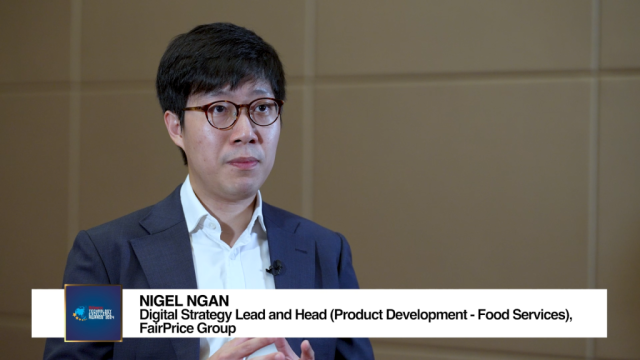Investing in the food revolution in Singapore and beyond
By Julien CollinFood, besides being the main source of energy for humans, is one of the best ways to propagate one’s culture to the rest of the world and unify people. Yet, with the ongoing Covid-19 pandemic, we’re witnessing instead, how food can drive fear and disunity among people. In recent weeks, food security and the Food Value Chain have come under the spotlight following the ‘panic-buying’ and stockpiling of food and amenities in supermarkets in Singapore and globally.
As an island nation which imports more than 90% of its food, Singapore was always painfully aware of its vulnerability to food supply shocks. Besides having a robust food supply chain strategy, Singapore has a national stockpile of main food categories like carbohydrates and protein for emergency use . It has also identified food security as one of the key areas to receive R&D funding, to meet the target of producing 30% of the nation’s nutritional needs by 2030. Some $144m has been allocated from the Research, Innovation and Enterprise 2020 plan for R&D work in sustainable urban food production, future food, as well as food safety science and innovation.
Now, more than ever, it is vital to understand how the food supply and value chains work together.
Much like the various ingredients and spices that combine to cook our favourite dishes, the Food Value Chain is made up of different contributors that work together to ensure that the consumers have food to eat. These contributors can be separated into three main distinct groups, namely farmers (agriculture and water), food processors (food products and beverages) and food providers (food retail/distribution and restaurants). Today, their combined efforts feed an estimated 7.7 billion people in the world, and by 2050, they will have close to 10 billion mouths to feed. However, numerous changes in consumer demographics can be expected on the path to 2050. Increased living standards, evolving consumer preferences and changes to the environment essential for food growth are all looming on the horizon.
Food prices, as with other goods and services, are determined by two factors – by demand and supply. On the demand side, demographic changes such as the evolution of consumers’ preferences impact food demand greatly.
Firstly, people are demanding greater convenience when acquiring food. Potentially due to a combination of our inherent laziness and the prevalence of digitalisation around the world, consumers have become more impatient when waiting for their food purchases. The emergence of Amazon Prime is one such example. Food providers in the market have traditionally met such consumers’ preferences by hiring delivery personnel to service clients. However, mobile phone applications such as UberEats, GrabFood, Foodpanda and Deliveroo have sprouted in the market, offering third party delivery services to food providers around the world. One would have thought that these food delivery applications would pose a threat to the food providers. Nonetheless, if food providers manage to reduce their distribution costs by wholly outsourcing deliveries to these third parties, the resultant cost savings may be more beneficial to them. Furthermore, placing their restaurants on such mobile applications would allow them to benefit from a bigger client base.
Secondly, people are getting wealthier and have access to a wider selection of food. In many parts of Asia, white rice is a staple food. Its high levels of carbohydrates and low cost allow lower income groups to have a full stomach. Despite its unique position in Asian culinary culture, eating white rice can increase the possibility of Type 2 diabetes. A study conducted by the Harvard School of Public Health found that people who ate three to four servings of rice a day (the Asian average) were 1.5 times more likely to have diabetes compared to individuals that ate smaller amount of rice. As globalisation brings economic benefits to Asia, people can opt for healthier food choices which are just as filling, other than white rice. In addition, a Mintel research report indicated that 48% of internet users aged 16 and above living in the metropolitan areas of Thailand planned to have healthier diets. 90% planned to eat more fruit and vegetables, whilst 53% were looking to reduce their meat intake.
This is not an isolated situation. With China and India forecasted to be the fastest growing Asia Pacific markets for healthy ingredients, the Asia Pacific healthy ingredients market is projected to grow at 8.26% per annum until 2022. The healthy food trend will affect all parties of the food value chain: farmers will have to skew towards more organic production; food processors will have to use more natural and healthier methods in food production(i.e. less sugar but still taste almost as good, or less saturated fats); and food providers will need to modify their inventory to match consumers’ preferences. One example was McDonald’s in 2013 which started to shift to fresher and healthier ingredients after suffering from its junk food brand image.
Lastly, the demand for ethical products has increased the appetite for anti-animal cruelty or vegan food choices. From 2013 to 2018, sales of ethical food products surged 47%, and it is estimated to grow another 17% between 2019 and 2023. Rising incomes have allowed consumers the privilege to choose their food, thereby driving this trend. This has required food processing companies to be transparent in their ingredients and sources. With consumers viewing animal welfare (45%) as the No 1 reason for buying any food product with an ethical certification, companies that do not pivot their operations and marketing to suit this trend will find themselves on the back foot.
On the supply side, the main constraint ahead is the capacity of the environment to continually support food production. Issues such as climate change and resource scarcity contribute to this limitation.
Greta Thunberg, the young climate activist, made headlines with her now-famous quote - “How dare you” - at the UN Global Climate Action Summit in September 2019. Similar to the generations to come, the food industry has a lot to lose to climate change. Global warming, extreme weather and droughts are all consequences that can severely devastate global food production.
The base of food production is the growing of basic crops and rearing of animals, which is highly sensitive to environmental conditions. Harsher climates, particularly higher temperatures, will obstruct the growth of certain crops and animals in some regions.
Extreme weather, thunderstorms and floods may damage crops directly or through contaminants from sewers and roads. At the other end of the spectrum, altered rainfall patterns and faster evaporation have increased the chances of prolonged droughts, leading to inhospitable soil conditions for crop cultivation. A study by the Columbia University Earth Institute showed that a 4-degree Celsius increase in global temperature would reduce U.S. corn production by half, with an 86% chance of simultaneous crop failure in the world’s four largest corn producers, namely US, Brazil, Argentina and Ukraine.
As mentioned earlier, the world’s population is edging up to 10 billion by 2050. By this time, the global demand for materials will double. Agriculture has already taken up 11% of the world’s land surface and 70% of all water from inland water sources, including streams and lakes. Amidst the problems brought by climate change, available resources useable for food production will continue to fall. The population growth will put an even bigger burden on the Earth’s available resources in future as governments balance the use of available resources between residential, agricultural and commercial purposes. In response to all these concerns, various parties have started “land-grabbing”, which are large scale land acquisitions by external parties such as foreign governments and corporations.
In future, farmers will face an intense challenge to stay profitable due to rising costs and reduced crop yields. The only way forward might be to pass their increased costs downstream, which will affect the cost of the rest of the food value chain. Should this scenario not materialise, we may see a large consolidation in the food industry. This is because only companies with sufficient economies of scale will be able to price their goods competitively.
At Indosuez Wealth Management, we advise our clients to gain exposure to thematic investments such as food through a list of stocks, bonds, funds and structured products. Besides, through the coordinated global efforts of our investment advisors from all over the world, we constantly monitor the performance of these investments.
Certainly food for thought for investments.

























 Advertise
Advertise









